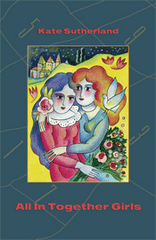
Dr. Delicious: Memoirs of a Life in CanLit is, as its subtitle indicates, a memoir of Robert Lecker’s life as a professor, critic, and publisher of Canadian literature. But who is this Dr. Delicious character? In the introduction, Lecker explains that after a student told him that his surname means “delicious” in German he began to reconceive himself:
The idea of being Dr. Delicious instead of plain old Professor Lecker made me think about the kind of writing I would have done if I was really the tasty version of myself. Professor Lecker would be reluctant to tell stories about his own life. He would resist the temptation to make his life in Canadian literature personal. He would not gossip. He would write scholarly articles and books that no one would read. But Dr. Delicious would lead a completely different life. He would delight in his classroom experiences. He would take liberties with his life story. He would talk about the ups and downs of being a Canadian publisher. He would bring in music, painting, hypochondria, malt whisky, deranged students, government grants, questionable authors, bank debt, termite infestations, a teaching stint in Brazil, lawsuits, the pleasures of hot sauce. He would write about his passions, his failures, how the whole business of CanLit drove him crazy, lost him sleep, drove him on.
I can appreciate how the idea of Dr. Delicious helped Lecker to abandon academic convention in embarking on this book, but in the early going I found the Dr. Delicious persona off-putting. To me it smacked a bit of an aging professor trying too hard to be cool. (No doubt my sensitivity to this stems from my own fears of venturing into that territory as a professor just past forty and no longer as conversant with my students’ pop culture references as I once was.) It was only when Lecker shucked off the Dr. Delicious veneer to describe the unabashed passion for the study of literature that he developed in graduate school that I was hooked by the narrative. The jaded academic is a familiar figure in the public imagination, and Lecker does go on to catalogue many of the frustrations of academic life with great insight and humour. But the passionate scholar is all too rarely represented, and it was a great pleasure to encounter one here.
Ultimately it is not a sharply drawn Jeckyll & Hyde conflict between what Lecker refers to as his “multiple book personalities” that makes this book so interesting, but rather their mostly peaceful co-existence. That Lecker is deeply suspicious of the CanLit canon in his critical work, yet contributes to its formation in what he chooses to teach in his professorial guise and what he chooses to publish as co-founder and long-time partner of Canadian small press ECW. That he is a champion of Canadian fiction and poetry, yet opts to devote a substantial amount of time and energy to the publication of dubious non-fiction titles (a low-carb cookbook, a glossy biography of Jennifer Lopez, WrestleCrap: The Very Worst of Pro Wrestling) to keep his press afloat. These are, of course, the realities not just of Lecker’s professional life but of academic life and small press publishing more broadly. And thus Dr. Delicious is a very satisfying read for anyone who is interested in the pleasures and frustrations of academic life, of small press publishing, or in the formation of and challenges to the CanLit canon. It was a bulls-eye on all three counts for me. Indeed, I was sufficiently intrigued by the snippets about the CanLit canon to buy a copy of Lecker’s previous book which is wholly devoted to the subject, Making it Real: The Canonization of English-Canadian Literature.
So, although I was not so keen on Dr. Delicious the persona, I highly recommend Dr. Delicious the book.





